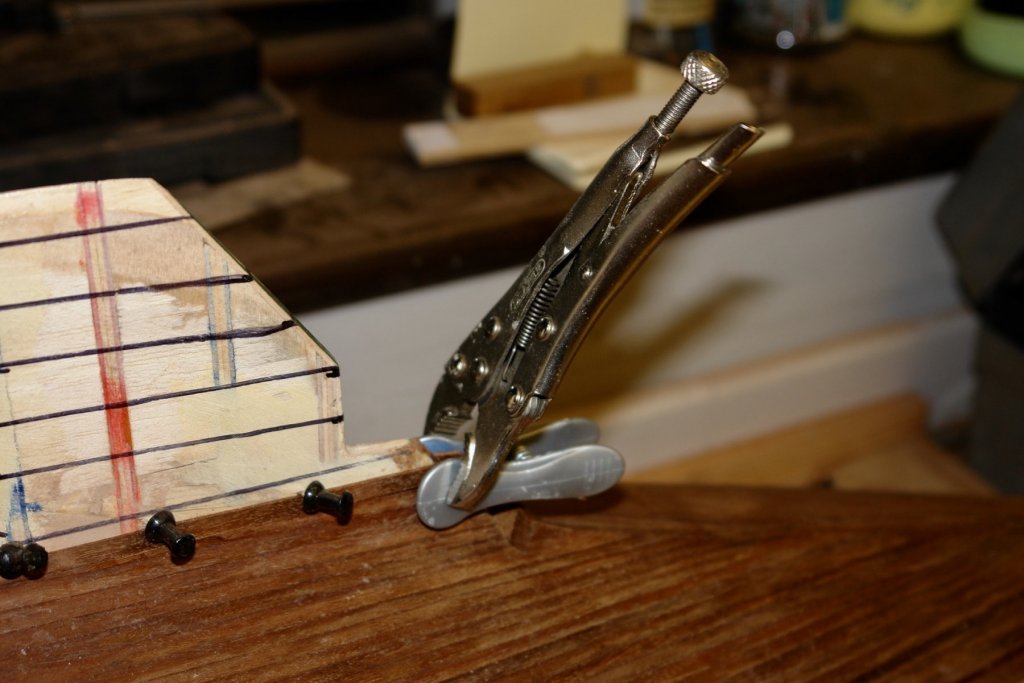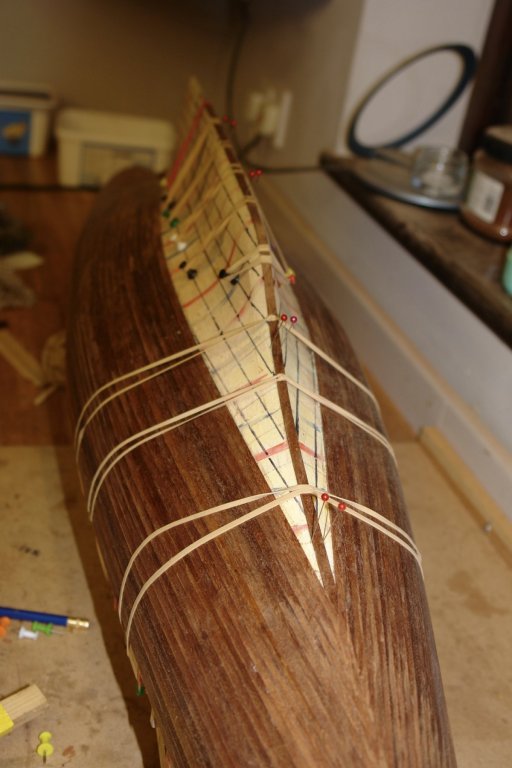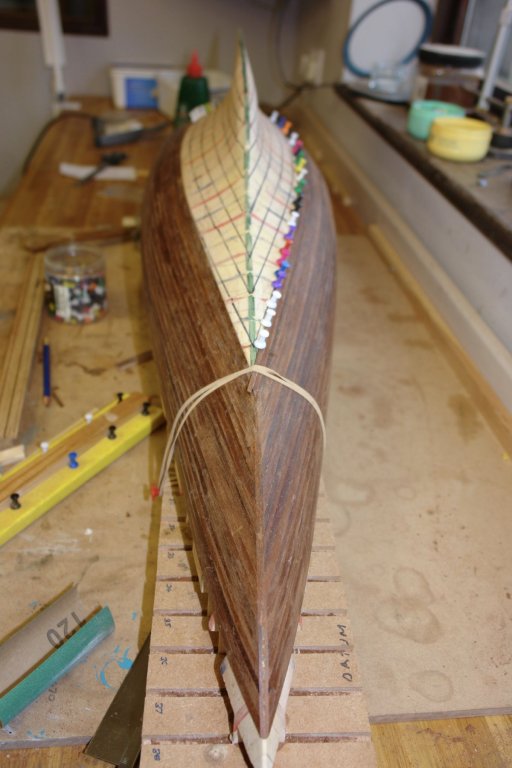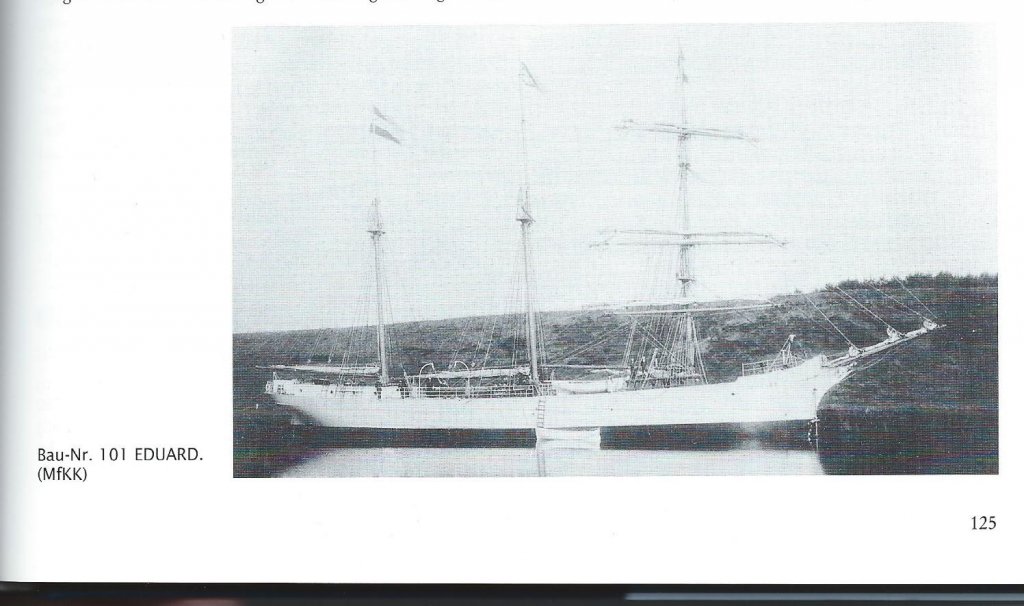-
Posts
3,906 -
Joined
-
Last visited
Content Type
Profiles
Forums
Gallery
Events
Everything posted by KeithAug
-
Paul Actually the clothes peg (which has rubber pads) was the first clamp. Unfortunately the spring was weak and the mole grips just happened to be handy. They are the middle size of a set of 3.
-
Further to the above comment I needed to accurately cut some planks to a taper of specific width and length (the measurements are taken from the hull). I do have a rip mitre gauge for the saw but I thought I would share the following method which I find easier and quicker. I set up the saw to cut the plank to the maximum width of taper needed. I then cut the plank to width. Having done this I then cut the plank to the length of taper needed. As I usually need 2 tapers (one for each side) I stick 2 planks together using double sided tape. Without changing the width of cut on the saw I then slot out the end of a piece of scrap. Having done this I create a notch using a hand saw. I then place the plank against the notch and use a push stick to apply side pressure to hold it in place while pushing the plank into the blade using the notched stick. I end up with 4 tapers - 2 correctly sized and 2 slightly smaller (because of the blade width). I know stealers are not supposed to come to a sharp point but I find they work fine on this type of hull. And so I proceed to plank.
-
Vossie, My mother told me not to frequent bars like that. Eberhard, John, Pat thank you for your appreciation - I hope the more difficult remaining part continues to please.
-
Hi John - I do understand "up the coast". A number of years ago my son was on a parent funded "elective" (university work experience vacation). He and a group of friends hired a car in Sydney having booked a sailing week in the Whitsunday Islands. Being the inhabitants of a small island they had no idea of how far they had to drive!!!!!
-
Jon I note your extensive refurbishment plans and conclude this will be like "Trigger's Brush".................................................I probably need to explain. Trigger was a character in a comedy called "Only Fools and Horses" (from the saying "only fools and horses work'). Trigger's brush is now famous as explained below:- It was one of the funniest scenes in arguably the best loved British comedy in the last three decades. A lovable imbecile sat in a café with his mates, basking in the glory of his recent award for saving his employers (the local council) money by using the same broom for 20 years. On cross examination from his sceptical friends, it soon becomes apparent that the broom had been the recipient of 17 new heads and 14 new handles in that time. However, that didn’t stop the amiable simpleton maintaining it was the same broom he received when he started sweeping roads.
- 57 replies
-
Gary, I say "never let the perfect be the enemy of the good". The deck looks great and your staining techniques are very interesting, but tell me how do you do it so quickly?
-
Dan - it is comments like this that make feel I never want to attempt a liner. I will be watching your production line with interest.
- 238 replies
-
- leviathan
- troop ship
-
(and 2 more)
Tagged with:
-
Planker's Progress 5 - Day 10. I got to the point on the underside of the bow where the planks were very flat where they intersected. I needed to change strategy so I introduced a "keel" plank with the intention that further planks would be butted against it. I also inserted a small block at the top of the rudder which will be sanded to give the hull in this area it'd final shape. The problem I was having with planking (as recorded in Planker's lament) was to the right of the inserted block. Here the curvature is acute and the planks were being distorted more than was good for them. I pressed on rather than rethinking and ended up cutting out a section 3 planks wide by 6 inches long and redoing it. I must remember that rework is slow - much better to do it right first time. In the next photo you can see that the extent to which taper planking has filled out midships relative to the bow and stern. As I proceed I will have to start sorting out the aft end of the keel where stealers will obviously be necessary. I finished day 10 with a planking count. So I make that 9.6 planks a day - good job I am not on piece work- obviously some way still to go.
-
Yes I looked at that and thought how much easier it would be if I could tongue and groove my planks. I'm not really up to it though on .055" thick planks.
-
Yes Eberhard - Thank you for the video, I found it very informative - what a lovely yacht.
-
Planker's Progress 5 - Day 9 I had a bit of a frustrating day today so I took it out on paper:- Planker’s Lament. I scratched my head and gave a sigh. The plank won’t go. It lies awry. Its tortured course. From stem to stern. Describes an arc of some concern. Concave, a twist and then convex. Its aim, I’m sure, is to perplex. I scratch my head again and sigh. And wonder where the time went by.
-
Jon An interesting little project which I will follow with interest. Seems to me that the new will be much more extensive than the old!
- 57 replies
-
Dan It is always a good Sunday afternoon when one of your updates appears. Lovely work on the funnels.
- 238 replies
-
- leviathan
- troop ship
-
(and 2 more)
Tagged with:
-
Isn't it annoying when your fingers are just too big. Very nice work despite your finger problem.
- 714 replies
-
- lady nelson
- victory models
-
(and 1 more)
Tagged with:
-
Planker's Progress 4. It's now day 8 of planking and I am about half way. Most of the time isn't actually work, as glue drying and thinking take their toll on productivity. I continue to work my way up the stern and I am managing the symmetry reasonably well. I have started to cover the rear of the keel in preparation for the next stage of planking. I am still cutting the fine angle at the plank ends with a razor saw but increasingly it is becoming a compound angle with the saw cut currently deviating by about 15 degrees from vertical. At the bow I am starting to move on to the flatter section and in consequence the port and starboard planks are overlapping along the line of the keel. As I complete a plank I sand the end flush from the opposite side and then notch it out to take the next plank ( a bit like interlaced fingers). 80 planks are now in place. Over the next couple of days those awkward hull / keel intersection planks will go on (hopefully).
-
Funny you should say that - I just sat down for a cup of tea and as I mused on todays progress I thought "I have spent most of the day wondering how I was going to do the next bit. Welcome to the indecisiveness club!
-
Eberhard. Yes I will need to manage the "flow" of the planks quite well particularly at the hull/keel intersection. The mahogany I am using beautiful close grained stuff but being 100 years old it is somewhat brittle and hence does not like challenging shapes. Thank you for your earlier help with SV Eduard. We obtained a copy of the book you recommended and also turned up an image from the family photo library. My wife's grandfathers Masters Certificate specifically states he was licensed as a Master of fore and aft rigged vessels. She was an elegant looking vessel - at least until UC-70 got her.
About us
Modelshipworld - Advancing Ship Modeling through Research
SSL Secured
Your security is important for us so this Website is SSL-Secured
NRG Mailing Address
Nautical Research Guild
237 South Lincoln Street
Westmont IL, 60559-1917
Model Ship World ® and the MSW logo are Registered Trademarks, and belong to the Nautical Research Guild (United States Patent and Trademark Office: No. 6,929,264 & No. 6,929,274, registered Dec. 20, 2022)
Helpful Links
About the NRG
If you enjoy building ship models that are historically accurate as well as beautiful, then The Nautical Research Guild (NRG) is just right for you.
The Guild is a non-profit educational organization whose mission is to “Advance Ship Modeling Through Research”. We provide support to our members in their efforts to raise the quality of their model ships.
The Nautical Research Guild has published our world-renowned quarterly magazine, The Nautical Research Journal, since 1955. The pages of the Journal are full of articles by accomplished ship modelers who show you how they create those exquisite details on their models, and by maritime historians who show you the correct details to build. The Journal is available in both print and digital editions. Go to the NRG web site (www.thenrg.org) to download a complimentary digital copy of the Journal. The NRG also publishes plan sets, books and compilations of back issues of the Journal and the former Ships in Scale and Model Ship Builder magazines.









